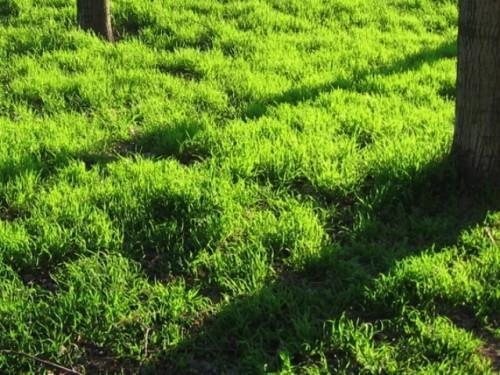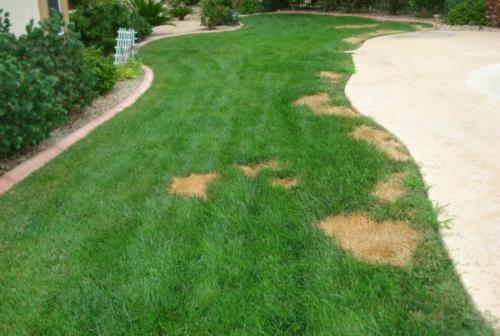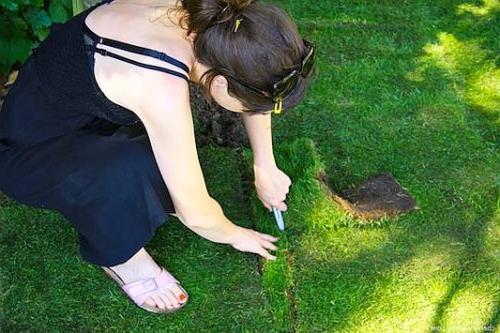How to level a bumpy lawn
Of course, in such a situation, leveling the lawn is of paramount importance. Some people do not think about it, sowing lawn grass seeds on the loosened ground and hoping that the grass will hide everything. In fact, uniform grass of the same type will only make any unevenness in the relief even more noticeable.
 Moreover, various problems can arise when mowing the lawn. In addition, significant changes can lead to bald spots and even partial death of the grass. Therefore, the question of how to level a lawn that grows with hummocks is very relevant and needs serious study.
Moreover, various problems can arise when mowing the lawn. In addition, significant changes can lead to bald spots and even partial death of the grass. Therefore, the question of how to level a lawn that grows with hummocks is very relevant and needs serious study.
Proper site preparation before sowing
Of course, the easiest way to avoid problems with irregularities on the lawn is to properly prepare the area before sowing it or covering it with rolls of the finished lawn.
To do this, you need to dig up the entire area with high quality - at least to the depth of the shovel bayonet. After that, using a rake, it is necessary to level the entire dug area. This will get rid of any defects - both pits and bumps. The next step is to tamp the area. On small lawns, you can simply walk on the ground a few times in hard-soled shoes. If the site has an area of several tens of square meters, it is worth using a hand roller.
This is a really important step and is often overlooked by some hobbyists. The lawn, contrary to their opinion, will not hide defects, but will make them even more noticeable. The bumps will bulge out, and when cutting, they will become completely naked, which will surely catch your eye. Pits can be even more problematic, especially in a rainy year. Water accumulates in depressions and does not go away for a long time. This is often the cause of root rot. After a few weeks, spots of yellow grass will appear on the lawn, and later bald spots - the grass in these places will simply die.
 We eliminate defects on the finished lawn
We eliminate defects on the finished lawn
Unfortunately, even a perfectly prepared surface does not always guarantee the high quality of the lawn and the absence of unevenness. Seasonal changes in groundwater often lead to the fact that the lawn, which was even in autumn, acquires pits or bumps in the spring. You cannot leave this unattended! It has already been described above what this can lead to. Finally, it's just not aesthetically pleasing at all. But the lawn is the owner's face.
If it has recently rained, you should wait a little - the ground should dry out, otherwise new damage will appear when walking on the lawn. Arm yourself with a clerical knife, a garden shovel, and, if necessary, a bucket of sand. Mark in advance all the places that need to be aligned - this will save time later. Use a knife to carefully trim the lawn where you will level it. Remove the cut pieces, being careful not to damage the root system. If you are dealing with bumps, then simply remove excess soil with a scoop. If you need to eliminate the hole, then fill it with sand.
 When the defect has been repaired, put the cut piece of lawn back in place and sprinkle with plenty of water.Before that, you can add a little fertilizer containing phosphorus - this will strengthen the roots and speed up their recovery.
When the defect has been repaired, put the cut piece of lawn back in place and sprinkle with plenty of water.Before that, you can add a little fertilizer containing phosphorus - this will strengthen the roots and speed up their recovery.